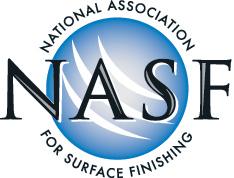| Presented in Partnership with: | |||
 |
 |
 |
 |
Search Results
The 41st William Blum Lecture, Mathematical Modeling of Electrodeposition
Author: Dr. Ralph E. White
Issue: , 2000Mathematical modeling can be used to predict things of interest to electroplaters and surface finishers. For example, one can use mathematical modeling to predict the current density distribution on a piece to be plated. This distribution will be a function of the geometrical setup electrodes in the bath and the solution properties of the bath. This feature of mathematical modeling could be used to predict the optimum placement of the piece and other structures in the bath that would produce the desired product. Another use of mathematical modeling is to predict the composition of species in a plating bath, which may be useful for determining the effect of complexing agents on the concentrations of principal species in a plating bath, for example. Mathematical modeling can also be used to predict the composition of a plated alloy as a function of the concentration of species in the bath and the operating conditions of the bath. In addition, mathematical modeling can be used to predict the effect of a specified duty cycle for pulse plating. Some aspects of mathematical modeling of electrodeposition and its uses are presented.
 |
 |
 |
 |
 |
| Home | Subscribe | Regulations | Compliance Assistance | News | Resources | Resource Locators | Directories | Online Training | About | Search | Contact | NASF.org |
The information contained in this site is provided for your review and convenience. It is not intended to provide legal advice with respect to any federal, state, or local regulation.
You should consult with legal counsel and appropriate authorities before interpreting any regulations or undertaking any specific course of action.
Please note that many of the regulatory discussions on STERC refer to federal regulations. In many cases, states or local governments have promulgated relevant rules and standards
that are different and/or more stringent than the federal regulations. Therefore, to assure full compliance, you should investigate and comply with all applicable federal, state and local regulations.
